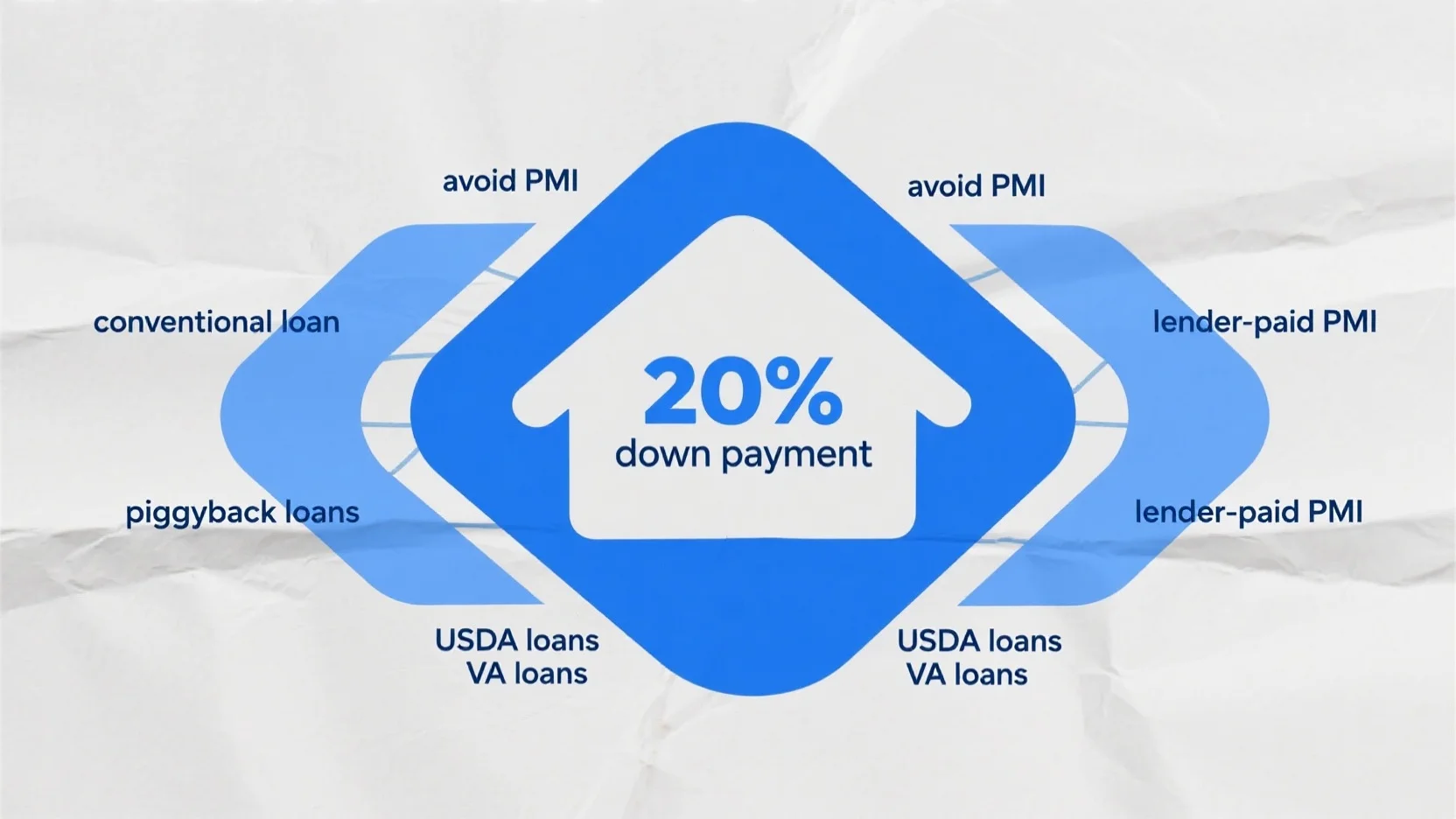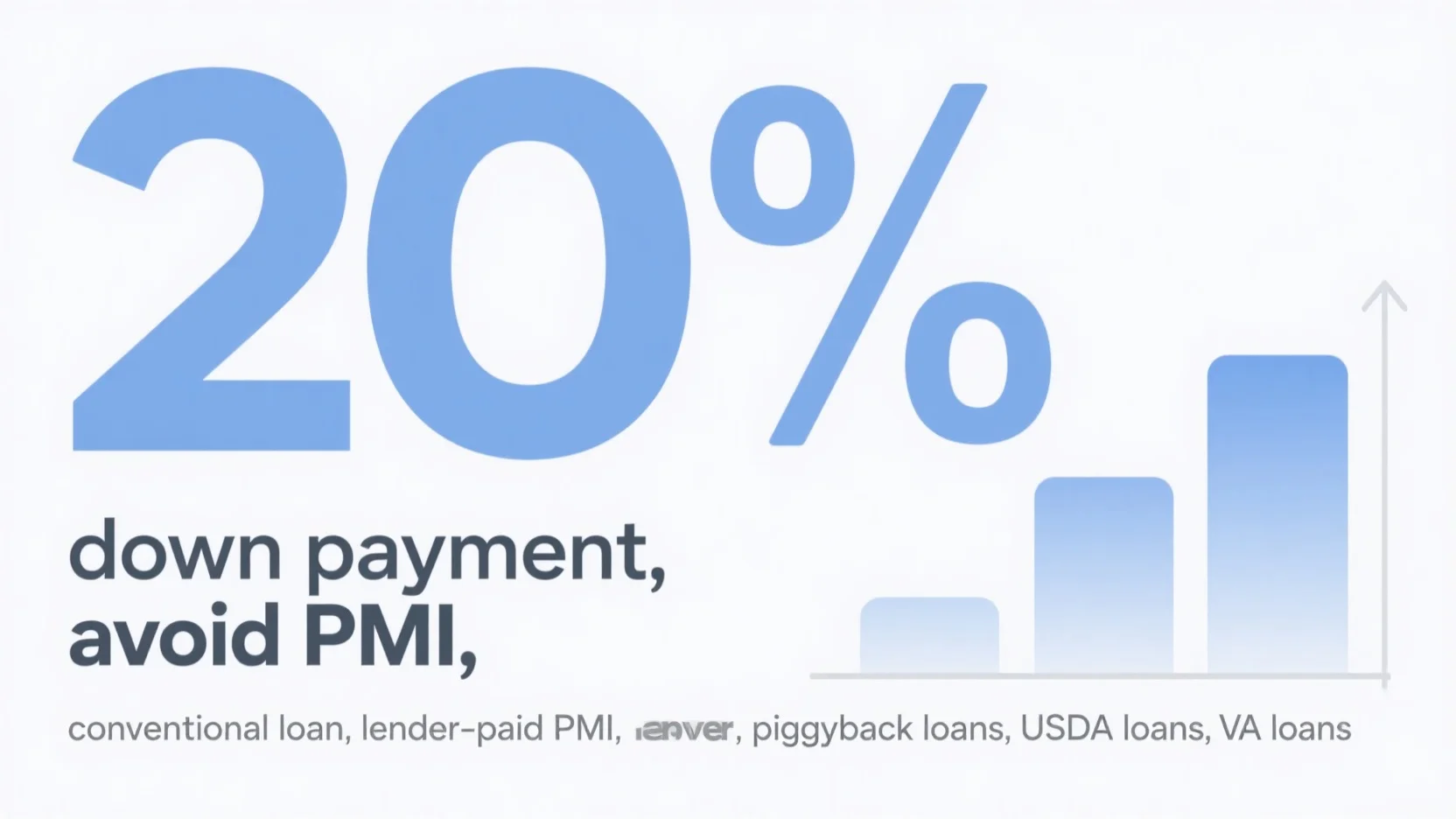
Simple Steps to Avoid PMI on a Conventional Loan

Image Source: pexels
Private Mortgage Insurance (PMI) protects lenders when borrowers default on their loans. It applies to conventional loans with less than a 20% down payment or a loan-to-value (LTV) ratio exceeding 80%. If you’re wondering how to avoid PMI on a conventional loan, I always recommend making a 20% down payment to avoid PMI entirely. For those unable to do so, alternative strategies exist, such as exploring specific loan programs or financing options.
Key Takeaways
- Making a 20% down payment is the best way to avoid PMI. This strategy eliminates extra costs and can lead to better loan terms.
- Consider piggyback loans or lender-paid mortgage insurance (LPMI) if a 20% down payment isn’t possible. These options can help you avoid PMI but may come with trade-offs.
- Explore government-backed loans like VA and USDA loans. These loans do not require PMI and can save you money if you qualify.
What is PMI and Why is it Required?
Definition and Purpose of PMI
Private Mortgage Insurance (PMI) exists to protect lenders when borrowers fail to repay their loans. It was introduced in 1957 to make homeownership more accessible for those unable to afford a 20% down payment. Since then, PMI has enabled over 33 million people to purchase homes they might not have otherwise afforded. Significant reforms after the 2008 financial crisis improved PMI’s role in housing finance, ensuring sustainable mortgage credit for low down payment borrowers.
PMI is specific to conventional loans and differs from other types of mortgage insurance, such as FHA mortgage insurance. For example, PMI can be canceled once you reach 20% equity in your home, while FHA mortgage insurance often requires refinancing to remove.
When PMI is Required on a Conventional Loan
PMI becomes mandatory when the down payment is less than 20% of the home’s purchase price. Lenders also consider other factors, such as credit score, debt-to-income ratio (DTI), and property type. Here’s a breakdown of the criteria:
| Criteria | Description |
|---|---|
| Down Payment | Required for down payments under 20%. |
| Credit Score | A minimum score of 620 is typically needed, though stricter rules may apply. |
| Stable Income and Employment | Borrowers must show at least two years of stable income and employment history. |
| Debt-to-Income Ratio (DTI) | Lenders prefer a DTI of 43% or lower to ensure borrowers can manage repayments. |
| Property Types | Investment properties often require higher down payments due to increased risk. |
Understanding these requirements helps borrowers plan better and explore strategies for how to avoid PMI on a conventional loan.
Financial Impact of PMI on Borrowers
PMI adds to the overall cost of a mortgage. On average, PMI costs about 0.4% of the loan amount annually. For a $400,000 loan, this translates to $1,600 per year or roughly $133 per month. However, costs vary based on factors like credit score and down payment size. Borrowers with lower credit scores or smaller down payments often face higher premiums.
For example, a borrower with a 10% down payment and a credit score of 760 might pay $50 monthly, while someone with a score of 620 could pay $250. These additional costs can significantly impact monthly budgets, making it essential to explore ways to avoid or minimize PMI.
How to Avoid PMI on a Conventional Loan
Make a 20% Down Payment
The most straightforward way to avoid PMI is by making a 20% down payment. This approach eliminates the need for private mortgage insurance entirely. I always recommend this option when possible because it reduces your loan-to-value (LTV) ratio, which can lead to better loan terms and lower monthly payments. However, saving for a 20% down payment can be challenging. Borrowers often overcome this hurdle by using gift funds from family or exploring state and local homebuyer assistance programs. Purchasing a less expensive home is another strategy to meet the 20% threshold.
Use a Piggyback Loan (80-10-10 Loan)
A piggyback loan, also known as an 80-10-10 loan, is another way to avoid PMI. With this method, you take out a primary mortgage for 80% of the home’s value, a second mortgage for 10%, and make a 10% down payment. This structure avoids PMI because the primary mortgage stays below the 80% LTV ratio. While this option has advantages, such as avoiding PMI costs and potentially lowering monthly payments, it comes with risks. The second mortgage often has a higher interest rate, and managing two payments can strain your budget. Adjustable rates on the second loan can also lead to unpredictable costs.
Tip : Before choosing a piggyback loan, evaluate your financial stability and ability to manage two mortgages.
Explore Lender-Paid Mortgage Insurance (LPMI)
Lender-Paid Mortgage Insurance (LPMI) is another alternative. With LPMI, the lender covers the cost of PMI in exchange for a slightly higher interest rate on your loan. This option eliminates monthly PMI payments, which can make your mortgage more affordable initially. However, the higher interest rate lasts for the life of the loan, potentially increasing overall costs. Unlike borrower-paid PMI, LPMI cannot be canceled once you reach 20% equity. I recommend carefully comparing the long-term costs of LPMI versus borrower-paid PMI before making a decision.
Consider VA or USDA Loans
Government-backed loans, such as VA and USDA loans, provide excellent options for avoiding PMI. VA loans, available to eligible service members, veterans, and their spouses, do not require PMI or any other ongoing mortgage insurance. USDA loans, designed for low- to moderate-income buyers in rural areas, also eliminate PMI. Instead, USDA loans charge upfront and annual fees, which are often lower than PMI costs. These programs offer significant savings, but eligibility requirements can be strict. If you qualify, these loans are worth exploring.
Look Into No-PMI Loan Programs
Some lenders offer no-PMI loan programs, which allow borrowers to avoid PMI even with a smaller down payment. These programs often require as little as 1% to 5% down. While they eliminate PMI costs, they may come with trade-offs, such as higher interest rates. Comparing no-PMI loans to conventional loans with PMI can help you decide which option suits your financial goals. For example, no-PMI loans can save you money upfront, but conventional loans with PMI may offer lower interest rates and the ability to cancel PMI later.
| Feature | No-PMI Loans | Conventional Loans with PMI |
|---|---|---|
| Down Payment Options | 1% to 5% without PMI | Typically requires 20% or more |
| Interest Rates | Competitive rates | May have higher rates due to PMI |
| Cost Savings | Avoids PMI payments | PMI adds to overall loan cost |
| Eligibility | Flexible for various buyers | Often limited to specific buyers |
Note : Always consult with your lender to understand the eligibility criteria and potential trade-offs of no-PMI loan programs.
How to Remove PMI Later

Image Source: pexels
Reaching 20% Equity Through Payments
One of the most straightforward ways to remove PMI is by reaching 20% equity in your home through regular mortgage payments. As you pay down your loan balance, your loan-to-value (LTV) ratio decreases. Once it hits 80%, you can request PMI cancellation. I always recommend keeping track of your payments and monitoring your LTV ratio. Staying current on your mortgage payments is essential, as lenders typically require a good payment history before approving PMI removal. If you’re unsure about your progress, contact your lender for an updated loan balance and LTV calculation.
Requesting PMI Removal After Home Value Increases
If your home’s value has increased significantly, you may qualify for PMI removal sooner. To confirm this, I suggest getting a home appraisal. Some lenders might accept a broker price opinion as a more affordable alternative. Before scheduling an appraisal, check with your lender about any specific terms or conditions. You’ll also need to submit a written request to your mortgage servicer to initiate the process. In some cases, a phone call may suffice. However, lenders often require certification that no junior liens exist on the property and may deny requests if the home’s value has declined. Staying informed about your lender’s requirements can save you time and effort.
Refinancing to Eliminate PMI
Refinancing your mortgage is another effective way to eliminate PMI. By refinancing, you can secure a new loan with an LTV ratio below 80%, which removes the need for PMI. This option also offers financial benefits, such as lower interest rates and reduced monthly payments. However, refinancing comes with costs, including appraisal fees ranging from $250 to $500 and closing costs. I always advise borrowers to weigh these expenses against the potential savings. Keep in mind that fluctuating interest rates could result in a higher rate on your new loan. Despite these challenges, refinancing often leads to long-term savings by eliminating PMI and lowering overall mortgage costs.
Avoiding PMI can significantly reduce your long-term mortgage costs. Key strategies include making a 20% down payment, using a piggyback loan, or exploring options like VA, USDA, or FHA loans. Each approach offers unique benefits. For example:
- VA and USDA loans eliminate PMI entirely for eligible borrowers.
- Piggyback loans help you reach the 20% threshold without a large upfront payment.
- Lender-paid PMI may suit those prioritizing lower monthly payments.
Understanding PMI’s impact on your finances is crucial. It affects monthly budgets and overall loan costs. Borrowers should review loan terms carefully, monitor home equity, and consider refinancing when appropriate. Consulting with lenders or financial advisors ensures you choose the best strategy for your situation.
Tip : Always evaluate your credit score, debt-to-income ratio, and property value when planning to avoid PMI. These factors influence costs and eligibility.
FAQ
What credit score is ideal for avoiding PMI?
A credit score of 760 or higher often results in lower PMI costs. Lenders may still approve loans with scores as low as 620.
Can I avoid PMI with less than 20% down?
Yes, options like piggyback loans, lender-paid PMI, or no-PMI loan programs allow you to avoid PMI with smaller down payments.
How do I know when I can remove PMI?
Monitor your loan-to-value (LTV) ratio. Once it reaches 80%, contact your lender to request PMI cancellation. A home appraisal may be required.
Tip : Always keep track of your mortgage payments and home equity to stay informed about PMI removal eligibility.
